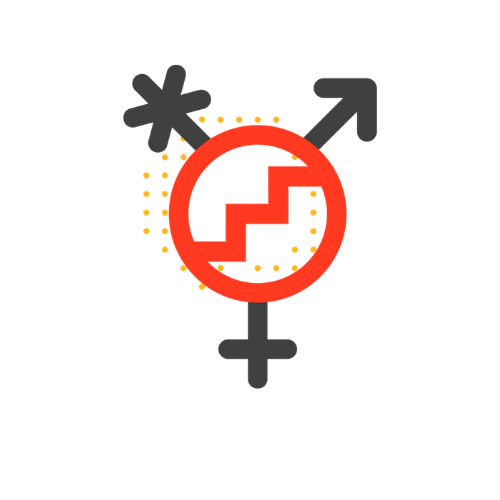
Power is one of three Vital Signs: Gender Equality reports released in October 2020. To read Peace, click here. To read Planet, click here.
Why Power?
Power is complex.
There are many types of power at play in our world, for example, the ability to make decisions about our lives, the opportunity to change public policy, and how we pass on cultural traditions to the next generation and build resilient communities. The data is consistent on one point: power is gendered. Women, girls, Two-Spirit people and gender-diverse people have less access to power than men and boys. In the Power report, we pay particular attention to economic and political power in our communities. We explore leadership, employment, unpaid work, income and more.
Key Statistics from the Report
Below, find a select selection of stats and data from the Vital Signs 2020 Power report. To learn more about these numbers, view the full PDF of Power.

Prior to the pandemic, poverty rates were already much higher for many groups of women, compared to the national average of 14.9%.
Single mothers and their children – 30.4%
First Nations women – 34%
Non-permanent resident women – 42%

62% of Canadian foundations report more men than women on their boards.

According to a new report from RBC published in April 2020, the employment rate of women dipped to 55% for the first time since the 1980s.

Only 15% of women in rural Ontario who have poor or intermittent access to transportation are employed.
“Indigenomics is economics from an Indigenous worldview, centred on core values including respect, reciprocity, future value, relationship and connectedness. Indigenomics is about facilitating potential, and the potential of Indigenous women in the Indigenous economy is enormous.”
Carol Anne Hilton, CEO and Founder,
The Indigenomics Institute

Indigenous women are starting businesses at twice the rate of Canadian women in general.

74% of essential care workers say the pandemic has impacted their well-being, reporting feelings of stress, anxiety and depression.

The share of Canadian families with both parents working full-time has more than doubled since 1980. Nevertheless, mothers continue to devote more time than fathers to childcare, household chores and caring for sick and elderly family members.
Thank you to those who made this report possible.
Collaborating partner:

This project is funded in part by:



The national management of the Vital Signs program is supported by:

More information:
Alison Sidney, Vital Signs Lead asidney@communityfoundations.ca





